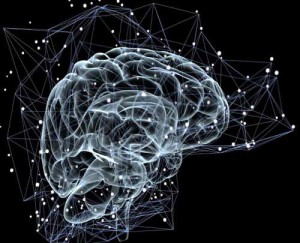 The purpose of this research study is to evaluate the relationship between parenting styles and academic motivation in students and compare the results in both high and low socioeconomic status areas. Specific aims of the study are to compare 3 parenting styles (authoritative, authoritarian, permissive/neglectful) to a student’s motivation towards their academics and to identify if the results of the comparison are similar or different in diverse socioeconomic status areas. Continue reading
The purpose of this research study is to evaluate the relationship between parenting styles and academic motivation in students and compare the results in both high and low socioeconomic status areas. Specific aims of the study are to compare 3 parenting styles (authoritative, authoritarian, permissive/neglectful) to a student’s motivation towards their academics and to identify if the results of the comparison are similar or different in diverse socioeconomic status areas. Continue reading
Category Archives: Mental
The Role of Sense of Belonging on the Relationship Between Campus Racial Climate and Academic Achievement of African American College Students
 Minority enrollment in higher education has increased over the last 40 years. However, even though African American students are more likely than ever to be enrolled in predominately white institutions (PWI), their rates of graduation and academic achievement fail to keep pace with their white counterparts (Fischer, 2010; Guiffrida & Douthit, 2010; Reitzes & Jaret, 2007; Rodgers & Summers, 2008). Continue reading
Minority enrollment in higher education has increased over the last 40 years. However, even though African American students are more likely than ever to be enrolled in predominately white institutions (PWI), their rates of graduation and academic achievement fail to keep pace with their white counterparts (Fischer, 2010; Guiffrida & Douthit, 2010; Reitzes & Jaret, 2007; Rodgers & Summers, 2008). Continue reading
Preference for Physical Activity
 Presently, 52% of adults do not meet the recommended levels of Physical Activity Guidelines prescribed by the Centers for Disease Control and Prevention. Thus, identifying a simple strategy to increase preference for physical activity could remedy the serious health concerns associated with limited physical activity. Continue reading
Presently, 52% of adults do not meet the recommended levels of Physical Activity Guidelines prescribed by the Centers for Disease Control and Prevention. Thus, identifying a simple strategy to increase preference for physical activity could remedy the serious health concerns associated with limited physical activity. Continue reading
Psychological Distress and Academic Adjustment of College Students
 Due to the massive influx of students attending colleges across the nation, an increase in the presence of mental health services are paramount. The mental health needs of today’s college students have risen dramatically. According to Kitzrow (2003), an estimated 84 percent of students who walk into a school counseling centers show significant causes for concern. Continue reading
Due to the massive influx of students attending colleges across the nation, an increase in the presence of mental health services are paramount. The mental health needs of today’s college students have risen dramatically. According to Kitzrow (2003), an estimated 84 percent of students who walk into a school counseling centers show significant causes for concern. Continue reading
Visual Versus Verbal Working Memory
 To assess the capacity of clinically available visual versus verbal working memory (WM) tests to differentiate between mild cognitive impairment (MCI) and subtle cognitive impairment (SCI) patients.
To assess the capacity of clinically available visual versus verbal working memory (WM) tests to differentiate between mild cognitive impairment (MCI) and subtle cognitive impairment (SCI) patients.
Methods: Graphomotor visual WM was assessed with the Object Span Test (OST) and Wechsler Memory Scale-IV Symbol Span (WMS-IV SS). Verbal WM was assessed with the Backward Digit Span Test (BDT) and Continue reading
Erotophobia, Erotophilia and Sexual Aggression
 Erotophobia-erotophilia (EE), defined as one’s openness to sexual experiences (Fisher et al., 1988), is understudied within the literature. The purpose of this study was to expand the limited knowledge of EE and sexual aggression (SA). Continue reading
Erotophobia-erotophilia (EE), defined as one’s openness to sexual experiences (Fisher et al., 1988), is understudied within the literature. The purpose of this study was to expand the limited knowledge of EE and sexual aggression (SA). Continue reading
Factors influencing health behaviors in those at risk for developing schizophrenia
 Individuals with schizophrenia have a greater risk for developing several chronic health conditions including cardiovascular disease, diabetes (Castillo-Sanchez et al., 2015) and metabolic syndrome (Bly et al., 2014). Problematic lifestyle behaviors appear to be directly linked to these chronic health conditions among those with schizophrenia (Saha et al., 2007). Obesity is another health concern among individuals with schizophrenia having a 45-55% greater chance of becoming obese (De Hert et al., 2009). Continue reading
Individuals with schizophrenia have a greater risk for developing several chronic health conditions including cardiovascular disease, diabetes (Castillo-Sanchez et al., 2015) and metabolic syndrome (Bly et al., 2014). Problematic lifestyle behaviors appear to be directly linked to these chronic health conditions among those with schizophrenia (Saha et al., 2007). Obesity is another health concern among individuals with schizophrenia having a 45-55% greater chance of becoming obese (De Hert et al., 2009). Continue reading
Attention Deficit Hyperactivity Disorder and the Impact on Adults
 The purpose of this thesis study was to see if there was a connection between Attention Deficit Hyperactivity Disorder and going on to attend college. Attention Deficit Hyperactivity Disorder (ADHD) is a disorder commonly diagnosed in children during the developmental years that impedes on their abilities to pay attention and stay still, which could be detrimental in a school setting. Continue reading
The purpose of this thesis study was to see if there was a connection between Attention Deficit Hyperactivity Disorder and going on to attend college. Attention Deficit Hyperactivity Disorder (ADHD) is a disorder commonly diagnosed in children during the developmental years that impedes on their abilities to pay attention and stay still, which could be detrimental in a school setting. Continue reading
Mobile Contingency Management with Underserved Smokers
 Research shows that contingency management (CM) can promote smoking cessation. However practical limitations, particularly accessibility to treatment among underserved populations, exist. The present study examined the feasibility and preliminary efficacy of using a mobile CM intervention with underserved smokers.
Research shows that contingency management (CM) can promote smoking cessation. However practical limitations, particularly accessibility to treatment among underserved populations, exist. The present study examined the feasibility and preliminary efficacy of using a mobile CM intervention with underserved smokers.
Participants used a smartphone app to Continue reading
The Relationship Between Schizotypy, Cannabis Use, and Creativity
 Schizotypy involves subclinical indicators of risk for schizophrenia-spectrum disorders. As levels of schizotypy increase, individuals are often described as increasingly eccentric and may perceive things differently than those with low levels of schizotypy.
Schizotypy involves subclinical indicators of risk for schizophrenia-spectrum disorders. As levels of schizotypy increase, individuals are often described as increasingly eccentric and may perceive things differently than those with low levels of schizotypy.
Interestingly, individuals with high levels of creativity can oftentimes be described as seeing the world in novel ways and can sometimes be perceived as eccentric. In fact, previous empirical research 2016 Psychology Continue reading
